Comcast Customer Spends Four Hours Canceling His Account
A Comcast user named Mike posted a portion of a four hour call with the company to cancel his account. The resulting back and forth, full of long, pregnant pauses and corporate rigamarole, isn’t nearly as exciting as Ryan Block’s Kafkaesque hell but Mike’s story is about patience, perseverance, and poorly-trained customer service providers whereas Ryan’s was about insanity.
Note that the video is only 38 minutes long but that Mike has four hours more of back and forth with America’s favorite cable company. His box set is forthcoming.
From his reddit post:
I grudgingly accepted the offer, called ATT to cancel their install, and waited for the Comcast confirmation e-mail I was told would arrive within the hour. It did not arrive.
I called back. The 2nd rep had no record whatsoever of the deal that was made on my first call. I informed them that I had recorded the call, so on to another retention specialist, who claimed to be able to match the original deal. I, again, grudgingly agreed. At this point, I was 2 hours in & just wanted it to be over with.
After this, still no confirmation e-mail, and after doing a speed test, I saw that my internet speeds were now maxing out at less than 30mbps.
I called back.
The 3rd rep had no record at all of any of the previous calls. In fact, they showed me as being enrolled in a plan that was more expensive than the one I had originally. So…over to another retention specialist. This one offered me the 50mbps internet for the aforementioned $39.99…BUT I had to bundle it with a TV package including basic + HBO.
I finally get off the phone after almost 4 hours, my speed tests are good, a confirmation e-mail finally arrives all seems well. I go to turn on my TV…no service.
I did not include this part in the video (though I do have the recording), but I called again and was told that my original cable TV box had been de-authorized when the plan was upgraded/changed/whatever, and that I need a whole new box. They offered to either ship me one, or send a technician to my house to install a new one. I declined both of these offers, as I simply do not trust that I will not be billed for these services.
So, in short, several phone calls, several lies, several hours. Finally got working internet at the right price but the TV service is still not working, and I am so wary of rocking the boat and having them screw up my account again that I haven’t authorized them to correct the TV issue…I simply don’t trust them to not screw it up further.
Featured Image: Bryce Durbin
from TechCrunch http://feedproxy.google.com/~r/Techcrunch/~3/1nx39nPwHK0/
via IFTTT
2015 Is Shaping Up To Be The Key Year For Venture Capital

Eye-popping is the only word that comes close to describing the numbers we saw this year from venture finance. The valuations accelerated rapidly, with companies like Slack jumping past the billion dollar mark in less than a year of the launch of its enterprise social product. Google announced a massive $542 million round in Magic Leap in October, and just yesterday, Instacart announced that it had reached a valuation of $2 billion following a round led by Kleiner Perkins.
Even if these valuations were frightening, we could at least find solace in the equally eye-popping acquisition prices technology companies were willing to spend this year on high-flying startups. The year started with a bang following Facebook’s announcement of its $19 billion acquisition of WhatsApp, in what remains the highest price ever paid for a startup.
The major acquisitions never stopped either, with Facebook also purchasing Oculus, Google buying Nest Labs, and Apple obtaining Beats all in multi-billion dollar transactions. In the enterprise space, massive acquisitions were equally the norm, with SAP buying Concur in a $8.3 billion transaction, and Oracle buying Micros at $5.3 billion.
There remain lingering concerns about whether we are seeing the start of a whole new era of startup growth or the final throes of an ecosystem completely out-of-control and about to pop. That bubble question is entirely the wrong one to ask though, and that is why 2015 is going to be the most interesting year in venture capital.
To see just the start of this, take a look at Beepi, which announced that it added another $12 million in capital to its previous $60 million round. While extending a round is not uncommon, what made this round so interesting was one of the sources of those funds. AngelList, the online fundraising site, put in $2.7 million led by Gil Penchina’s syndicate, the largest investment ever made from the platform.
This is truly a new world for VCs. While AngelList’s presence has certainly not gone unnoticed in the venture world, its effect has been most immediately felt by angels themselves in seed rounds. Until now, the platform’s round sizes were simply not at a scale where early-stage investors had to spend much time considering the platform or how they might fight it competitively.
That is changing as its rounds increasingly move into the seven-digits. Many firms thrive on investments at a couple of million dollars a piece, and now these funds won’t just compete with each other, but also with every large syndicate on AngelList. That is great news to entrepreneurs, who will almost certainly gain better valuations and more control over their company, but for traditional VCs, they are going to have to find ways to adapt against this new onslaught of funding.
Even more than the early-stage changes though, growth rounds of fast-growing companies are increasingly going to be done by insiders, or more specifically, friends of the insiders. Venture capitalists are increasingly offering their limited partners the ability to invest directly into later rounds of their early-stage investments, giving them important exposure to growth while mitigating management fees. LPs have traditionally eschewed these sorts of options, preferring to back investment managers who can make these decisions on their behalf. But as startups increasingly wait to exit, the investment options for growth are simply more limited.
If I had to make a single prediction about venture capital in 2015, it is that the gulf between the very top venture capital firms and the rest of the industry will widen even more than it is today. Top firms who can organize these sorts of easy growth rounds can promise almost unlimited capital to their entrepreneurs, eliminating the bane of fundraising for founders. That’s a heck of a selling point when the term sheets come in.
While this has obvious implications for founders, the wider implications are for everyday investors. Since the 1990s, common investors have been increasingly prevented from investing in growth stocks since startups simply don’t go public as early as they used to. These issues will only compound as large managed funds increasingly become comfortable with investing directly in growth rounds. A founder will almost certainly prefer to take dollars from a handful of private investors rather than submitting to the vagaries of the stock market. That investment inequality is going to accelerate rapidly in the coming year as the tools and contracts needed to manage this capital mature.
The other issue, which Eric Kim and Chi-Hua Chien brought up in an article here recently, is that tech companies are sitting on a pile of cash, about $600 billion or so. These changes to later growth rounds also means that the returns that tech companies can potentially receive from their cash will decline if they aren’t actively investing that money in strategic growth rounds. Google’s half-billion investment into Magic Leap is just the beginning of this phenomenon.
2015 is shaping up to be one of the most interesting years for venture capital ever. We will witness the rewriting of the rules for early-stage fundraising as well as a change in the mix of capital for growth rounds that will spread out the growth of top companies far wider than before. Top Silicon Valley companies will continue to impress their incumbency status on the industry as well. While perhaps more of the same we have already started to see these past few years, 2015 will likely be the watershed year that all of these trends come together for the venture capital industry.
Featured Image: aisletwentytwo/Flickr UNDER A CC BY 2.0 LICENSE
from TechCrunch http://feedproxy.google.com/~r/Techcrunch/~3/u-eC5HJa2q4/
via IFTTT
On Comcast? Buy Your Own Modem.
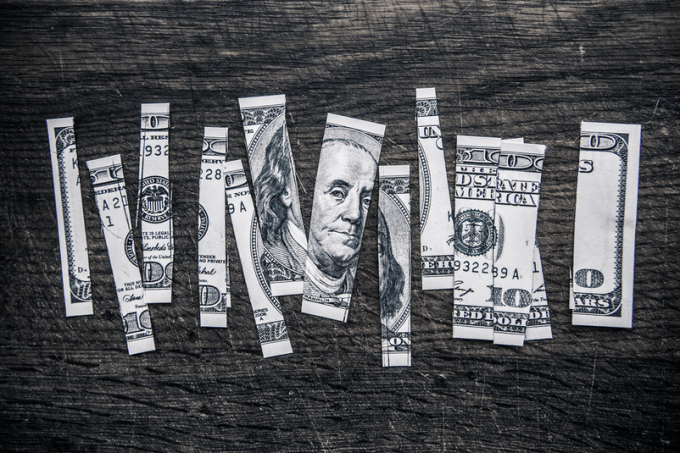
Is your New Year’s resolution to save money? Here.
Comcast just raised their modem rental fees from $8 to $10, because apparently charging you too much for a modem costs more than it used to.
If you’re on Comcast and don’t own your modem, you’re throwing away roughly $120 a year for no reason.
I did a quick survey amongst my peers (that is, whoever was around on Facebook Messenger and the people sitting around me in this coffee shop), and 7 of the 10 (!) said they rent their modem.
Curiously, most of them own their WiFi router, but not their modem. Why? For the most part, because they “dont know what to buy”.
Here: buy this. (Note: this won’t work for people who use Comcast’s phone service.)
There was a time when buying a modem was complicated. That time ended about a decade and a half ago.
(If you’d rather pick from a huge list, here. But the one above is one that I personally use and can vouch for as being excellent.)
That modem above costs $68. If you’re paying Comcast $10 a month to rent, this modem would pay for itself in a little over half a year. Are you going to be on Comcast for 7 months? Bam! Money saved.
“But I don’t know how to set it up!”
Step 1: Plug it in.
Step 2: Call Comcast, say “I bought my own modem”, read them the serial numbers on the back of the modem. Done.
If you’re using one of Comcast’s combo modem/routers, the cost and setup will be a bit more complicated — but you should still do it. Combo modem/routers are, generally, hot garbage.
As an added bonus: if you’ve been on Comcast a while and haven’t gone out of your way to upgrade your rented modem, any DOCSIS 3.0 modem you buy (like the one above) will probably be faster and less likely to randomly break itself in a way that requires a restart.
Featured Image: TaxCredit/Flickr UNDER A CC BY 2.0 LICENSE
from TechCrunch http://feedproxy.google.com/~r/Techcrunch/~3/G8nW7_85o0A/
via IFTTT
Windows Store attracts a third more active users in 2014

The Windows Store might still be a bit of a mess, and there aren’t anywhere near as many decent apps as those found in the Apple App Store and Google Play, but things are definitely improving.
Changes to the store in 2014 resulted in 30 percent more active users, and over 110 percent year-over-year increase in app downloads and gross sales. Microsoft says it has seen an 80 percent increase in registered developers and a 60 percent increase in app selection too, which is good news for the platform. The software giant has also revealed big plans are afoot for 2015.
Enhancements next year include expanded payment options in emerging markets with carrier billing, and more monetization options. According to Microsoft, in-app purchasing and in-app advertising currently account for 35 percent and 58 percent of Windows Store revenue respectively. The software giant plans to focus its attention on in-app advertising going forward, which is good news for developers, but less so for consumers.
Microsoft also intends to continue working to improve app discovery next year, which is something it was particularly poor at in the beginning (personally, I think splitting "New" from "Rising" would help tremendously here).
The next version of Microsoft’s operating system, Windows 10, will include a unified store for both Windows and Windows Phone apps, so making sure the Store is as efficient and as cleanly presented as possible will be essential.
Photo credit: Lighthunter /Shutterstock
from BetaNews http://feeds.betanews.com/~r/bn/~3/nkFZijEiwKI/
via IFTTT
Now With 12 Million Users, Timehop Adds Twitter Vet Jason Goldman To Its Board
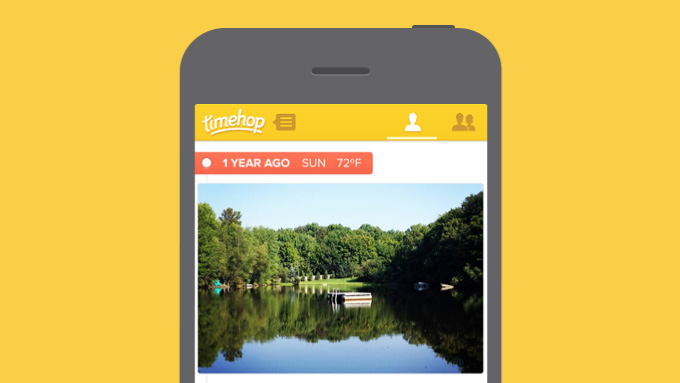
It’s been a very busy few months for Timehop.
The app, which provides users with a personal “today in history” memo by surfacing their photos and social networking posts from this day one year ago or more, is closing out the year with more than 12 million registered users, half of whom, some 6 million, open the app every single day. That’s double the number of both registered and daily active users that Timehop had just five months ago, when we last checked in with the company in July.
To help advise with the growth, the company has added Jason Goldman to its board of directors. Goldman, a longtime Timehop user who has been an informal advisor to the startup’s executive team for a year, has become known in tech circles as something of a quiet secret weapon for his 12+ years of work alongside the more widely-known Evan Williams and Biz Stone as an executive and board member at Blogger, Google, Twitter, and Medium. Goldman’s experience with such products will likely come in handy as Timehop navigates rapid growth in its user base.

Jason Goldman
Taking off with the mainstream
In an interview earlier this month, I told Timehop’s CEO Jonathan Wegener that anecdotally, I’ve started to notice a surge in Timehop posts on Facebook from family members and old school friends — people well beyond the Silicon Valley and startup scene. According to him, Timehop’s ongoing growth spurt indeed has to do with the app hitting an “inflection point” in its appeal beyond its early niche of users.
“People who are super early adopters have been on Facebook since 2004 and Twitter since 2006. More mainstream people were a few years behind. Their experience on Timehop was not going to be really good until now,” Wegener said.
Timehop began in February 2011 at a Foursquare hackathon as an app called “4SquareAnd7YearsAgo.” It caught on right away with some prominent social web early adopters, but Wegener says that at the time, 60 to 70 percent of users who tried out the app didn’t have enough of a history for it to work correctly.
“Three years later, everything’s just ripening,” he said. “When we started, remember, Instagram had barely even launched yet. We’re just now getting to the point where people have years and years of digital histories. That’s always been our bet: Your digital history is growing exponentially.”
A unique engineering challenge
But all that exponential growth needs the support of especially solid infrastructure. Timehop’s staff of 18 has been focused in recent months on reinforcing its architecture to handle the growth and keep its latency down. The company has moved off of Heroku and onto Amazon’s Dynamo DB, and has rewritten its codebase in the Go programming language.
Those changes have been key, because Timehop has unique technical challenges compared to many other social-oriented apps, Wegener said. “When someone signs up for an app like Facebook, they typically have no storage needs and no data, and their requirements grow with time. On day one when someone signs up with Timehop, we have a small window of about 10 seconds to grab everything off of their social networks and shoulder all of that content.”
The road ahead
Looking ahead, Wegener says that Timehop has begun to think about how it will make money — a company like Coca-Cola could pay for a feature on the anniversary of its being founded, for instance — but for now, he says that revenue generation is likely a number of months away.
In the near-term, Timehop is hoping to build itself into a platform where users can write their digital histories across all types of services: Think flight histories, Uber rides, Runkeeper runs, and beyond. “The social networks are the low-hanging fruit for us. Your digital history is much wider than just the things that you post to Facebook and the photos on your camera.”
from TechCrunch http://feedproxy.google.com/~r/Techcrunch/~3/nneGG1s9LDw/
via IFTTT
Fighting Distractions Should Be Top Resolution For 2015

BING the head of Sony Pictures is talking about CLICK my friend just uploaded a photo to Face BING the wreckage of the AirAsia flight PLOP Danny, are you around for dinner? We are thinking DING Try out the new version of our app CLICK the weather today will be PING Danny, we have a brilliant idea for a startup and we are launching on Kickstarter.
BUZZ. Game over.
The first minutes after waking up are regularly the most stressful of the day, and it shouldn’t be like this. I wake up to dozens of notifications on my phone, driven by an expansive array of messaging and email apps as well as news and personal updates.
Every few months, I go through a process of cracking down on all of these sources, from retooling my settings in Notification Center to changing my email preferences on websites and apps. Yet no matter how many times I attempt to ameliorate the situation, it always seems to revert back to an unsustainable level. Worse, if I just try to ignore it all, friends, colleagues, and sources complain that I am out-of-touch since I haven’t responded to their entreaties in some arbitrarily short timeframe.
Increasingly, we are merging with our devices to become a part of them, blurring the line of who is responding to who. It used to be that I could sit and read a book for hours without even worrying about the time. Now, I can barely go more than a couple of pages without pulling my phone out of my pocket to make sure something hasn’t happened.
I know I am not the only one who is recognizing this change – it’s common fodder for dinner conversations. Yet almost everyone I talk to has already thrown in the device on the issue (so to speak), surrendering to our devices without even putting up a fight.
This is the year I stop.
Researchers investigating distractions have unequivocally shown that multitasking and interrupting our thoughts has an enormous deleterious effect on our performance. Overall productivity drops precipitously as our brain scrambles to try to keep up with the constantly changing tasks we throw at it. The real damage though isn’t just efficiency, but also the decline in deep thought and creativity that is at the core of excellent, innovative work. We all want to do our best, but what happens if the very devices we are using prevent us from doing it?
I wish personal resolve was sufficient to ensure that distractions would go away, but that simply isn’t the case. Instead, we as a society are encouraging more interactions, often with the the ridiculous hope that it will increase performance or profits.
Just take the spread of open plan workspaces, which this year was estimated to reach 70% of all offices in the United States, according to industry sources. As these offices have flourished, our productivity has done anything but, leading to a spate of articles in almost every publication about their downsides this year.
Investigators have obviously shown that performance declines in such distraction-prone environments, but that isn’t even the worse of it. These offices can also increase stress, blood pressure, sickness, and interpersonal tension. Yet, the trend only looks set to continue as managers drink the Kool-Aid of “fluid conversations” over “people behind desks actually doing work.”
Managers aren’t the only ones who want to see us distracted. Advertisers are encouraging the use of “second screens,” the use of mobile devices or tablets during television shows, often as a tool for social interaction with sites like Twitter. At first, the industry hesitated with this customer behavior, since the ads were on on the television after all. But now many see this new behavior as an opportunity to display ads throughout a show on the second screen, not just during commercial breaks.
I don’t want to be alarmist and argue that we are reaching peak human. Instead, we need to recognize the context that is distracting us, changing what we can change and advocating for what we can hopefully convince others to do.
My solutions aren’t novel, but I am going to commit to them more aggressively than I have in the past. First, I am going to seal off the first and final hours awake to be completely device-free. I am not going to respond to messages at midnight or 7am, but instead offer my mind a chance to calm down before and after the intensity of the workday.
Next, I am going to devote most of that first hour to determining exactly what work I need to accomplish today – and what I don’t need to do. Like many, I have allowed emails and messages to drive my to-do list, even though I already know what I should be doing. My days are not that unpredictable (except when a major news story breaks out, of course), and thus planning can greatly reduce stress and distractions – cutting down the length of my workday to boot.
Finally, I am developing a habit of keeping my apps closed when I am not immediately using them. My computer is more than powerful enough to reopen an app like Mail and have it downloading email within 10 seconds. I don’t need the continually streaming notifications across my desktop, nor do I need sound effects interrupting my work. Reducing proximity is the key here, and just having to click to open an app is often sufficient to avoid a 5-minute procrastination delay.
This distractions disease is afflicting all of us, degrading the work we do and hindering the kind of creative thinking that is critical for excellence. We need to protect that deep thinking, which is why I encourage all of you to make fighting distractions the new “lose weight” resolution of 2015. BEEP. If you will excuse me, a friend just posted an image of a cat, and I need to immediately respond to this.
Featured Image: smlp.co.uk/Flickr UNDER A CC BY 2.0 LICENSE
from TechCrunch http://feedproxy.google.com/~r/Techcrunch/~3/9_91pMaRGRg/
via IFTTT
Tesla Is Working On Robotic Snakes That Emerge From The Wall To Charge Your Car
 Elon Musk is pretty much the best thing about Twitter, and today is no exception – the Tesla CEO tweeted that his electric car company is actually working on tech that would allow chargers to snake out of the wall and plug into your car automatically, eliminating the need to manually connect when you get your Model S back to your garage at night.
Elon Musk is pretty much the best thing about Twitter, and today is no exception – the Tesla CEO tweeted that his electric car company is actually working on tech that would allow chargers to snake out of the wall and plug into your car automatically, eliminating the need to manually connect when you get your Model S back to your garage at night.
This would presumably somewhat resemble the kind of articulated robotic arms made famous by comic book villain Doctor Octopus, but less threatening and evil. The invention would appear to be driven by a desire to make the process of charging Tesla vehicles even more convenient, and also by extension more idiot-proof – you can’t forget to plug in your car when the plug is autonomous, after all.
Backwards compatibility for said tech is a nice bonus, and yet another example of how Tesla goes out of its way to bring the benefits of its advances to existing, as well as new customers. Already, Tesla has begun rolling out battery swap tech that works with existing cars, and earlier this year it introduced a warranty extension that applied backwards to existing Model S cars already shipped.
from TechCrunch http://feedproxy.google.com/~r/Techcrunch/~3/XJCZNAp7cQg/
via IFTTT
NYC May Integrate Apple Pay, Bitcoin, PayPal For Parking Tickets

Given that NYC is the greatest city in the world (I’m definitely not biased), it makes sense that the Big Apple is looking to give its residents a better way to pay off their many parking tickets.
According to MarketWatch, the city of New York issues eight to ten million parking tickets each year, coming out to around $30 billion in revenue for the city. That said, the city is considering introducing Apple Pay, PayPal and Bitcoin as methods to pay parking tickets.
As it stands now, drivers are paying their tickets via mail or in person, or for the truly savvy, online. Still, that eliminates the ability to pay on mobile (mostly, because it’s a horrible experience) and it also means that drivers who pay with credit or debit are subject to a convenience fee.
Because the current process is so difficult, many drivers pay their tickets late, costing them even more money.
The city envisions a system that would allow drivers to take a quick picture of their ticket, and then choose a method of payment. However, NYC has only requested more information on the payment systems, and no official plans are in place yet.
from TechCrunch http://feedproxy.google.com/~r/Techcrunch/~3/ZEPZohUuWqs/
via IFTTT
TinyPulse Raises $3.5M Led By Baseline To Help Companies Keep Tabs On Employee Happiness

A few years ago, a startup called TinyPulse launched to change the way employee reviews were done. Based on the promise of weekly, one-question surveys, the company has grown to more than 20 employees and just raised $3.5 million in Series A funding.
The funding was led by Baseline Ventures, with former eBay, Microsoft, and Starbucks executive (and Baseline founder) Steve Anderson joining the board. Also participating was Michael Dearing’s Harrison Metal, along with other investors.
TinyPulse was founded in 2012 to help companies track employee happiness and productivity within the organization. Rather than asking employees to answer a long survey or questionnaire annually or semi-annually, TinyPulse sends them an email with a single question each week.
Because the barrier to answering each one-question survey is so low, companies see relatively high response rates among employees each week, giving them the ability to instantly keep tabs on employee happiness. The answers to those questions also provide a more accurate representation of how that environment changes over time and how it compares to other employers.
In addition to answering the one question a week, employees are also able to nominate their peers for recognition each week, and also to make suggestions about how workplaces can improve. Since feedback is anonymous and immediate, employers can more readily respond to issues, rather than waiting for yearly review periods to recognize when there are problems.
As TinyPulse has added new customers, it’s also managed to collect a huge amount of data on how employees in different workplaces respond to questions each week. According to founder and CEO David Niu, the company now has more than 500 clients, which include companies like HubSpot, Deloitte, StitchFix, and Converse.
Until now, most of those clients have come to TinyPulse via word-of-mouth. But with the new funding, TinyPulse will be ramping up its sales efforts to bring more customers on board. It will also be investing in product development to add more features for its clients.
Although TinyPulse is always looking for ways to improve the experience for client, Niu says it’s important that the company stay focused on keeping the interaction with employees lightweight, easy, and approachable. At the same time, he believes there are ways to make the product more flexible and customizable for employers.
But hey, that’s what you can do when you get $3.5 million in funding after bootstrapping for two years.
from TechCrunch http://feedproxy.google.com/~r/Techcrunch/~3/yH4voVyjb_A/
via IFTTT
Want to launch your own DDoS attacks? Just buy them from Lizard Squad

You know what it's like. You have a niggling desire to launch a DDoS attack on a website but there are a couple of problems. You might not know how to do it, you might not want to run the risk of getting caught, or you might, you know, be too lazy to do it yourself. Never fear, Lizard Squad is on hand to help you out.
The hacker collective hit the headlines over the holidays after taking out the PlayStation Network and Xbox Live. It then claimed to have had a (small) hand in the hack of Sony, but now the aim appears to be to monetize the whole venture. Lizard Squad has launched a service called LizardStresser that could be used to launch DDoS attacks.
Referred to as a "booter", LizardStresser is a service you can sign up for on a monthly or lifetime (five years really) basis. There are a number of packages available that can be used to "stress test" a particular server for anything from a couple of minutes to several hours at a time. As soon as one attack, er stress test, is over, more can be launched straight away at no extra cost, providing you are within the same billing cycle. With monthly fees ranging from just $2.99 up to $69.99, and lifetime subscriptions costing between $29.99 and $309.99, it's all very affordable stuff, ripe for abuse.
Of course, LizardStresser tool is not being directly marketed as a DDoS weapon. Take a look at the terms of service -- yes, even a DDoS tool has such a thing -- and you're told that:
Permission is granted to stress test dedicated servers and networks owned by you. This is the opportunity to make your firewalls better, not to misuse against the law.
Furthermore, the tool may not be used to "intentionally send a ddos flood to an IP address not owned by yourself". All clear? Jolly good.
LizardStresser was launched via Twitter to a flurry of interest:
The group was quick to boast about the power of the attacks that could be launched:
Lizard Squad has previously claimed that its aim is merely to highlight security issues, and the terms of services play up to this idea. But in reality it is hard to pretend that this is anything other than a DDoS for hire available to anyone willing to hand over the cash.
Photo credit: wavebreakmedia / Shutterstock
from BetaNews http://feeds.betanews.com/~r/bn/~3/G-1bI6WWS0E/
via IFTTT
Apple's 14-day returns on iTunes could kill devs and musicians
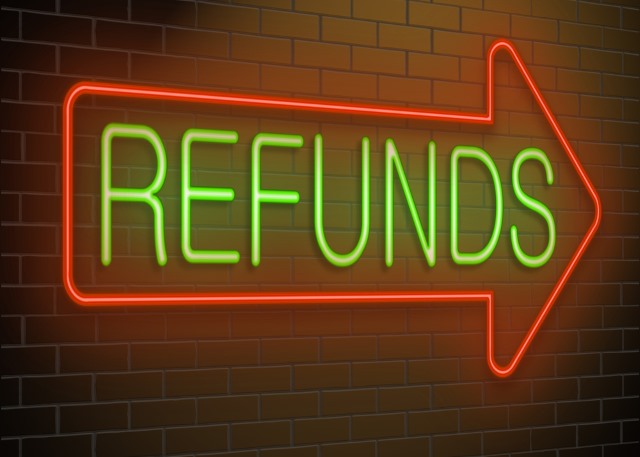
From now on, if you buy an app, music track or book from iTunes and change your mind, you can get your money back in the first two weeks, no questions asked -- if you are in the EU, anyway. Distance selling laws mean that a 14-day cooling off period is in place, so it is possible to get a refund on anything bought through iTunes in this timeframe.
It doesn’t matter if you don't like an app or album, something doesn't work as it should, or you just need your money back after an impulse purchase, the cash will be returned to you without question. One the face of it, this is great news for consumers, but the outlook is potential less rosy for app developers, authors and musicians.
A consumer rights directive was passed in 2011, but only came into effect more recently. Apple has updated its terms and conditions in numerous European countries (including the UK), and the new policy includes a "right of cancellation" that reads: "If you choose to cancel your order, you may do so within 14 days from when you received your receipt without giving any reason, except iTunes Gifts which cannot be refunded once you have redeemed the code".
This is a marked change from the way things were dealt with previously; refunds were possible, but Apple would look at each request individually. The new policy effectively means that everything in Apple's digital stores can be bought on a trial basis -- great if you want to try out something new without the risk of being out of pocket, but it's a system that is open to abuse.
Fancy listening to an album? Hand over your cash and it can be yours in a matter of moments. When that final track comes to an end it might be a month until you want to listen to it again -- why not just get your money back and 'buy' it again if you do need another fix. You can basically rent content free of charge.
The same goes for apps and games. You might part with your cash to try out a particular title and then opt to get a refund. Game progress, apps settings and files can be stored in the cloud so the next time you buy it, you can pick up from where you left off.
It might seem cynical to point out the flaw, but it exists, and it will be used. Developers will suffer -- it's unavoidable. In the case of music, there would be nothing to stop you from simply retaining the tracks -- DRM be damned! It will make sales figures very difficult to keep track of, making charts all but meaningless. An app may have been downloaded so many thousands of times, but how many times has it been returned and re-downloaded?
But for developers and artists, it is the potential loss of revenue that's the serious issue here. Smaller developers in particular could really suffer. Most people might think nothing of spending a buck, Euro or quid on an app, discovering it does suit their needs and chalking it up to experience. The developer can learn from any feedback and make changes for future versions, using the income from the initial sales to fund work. But if there is the option of getting one's money back, well... why not? Artists' and developers' pockets will be hit, and development and output are at serious risk of stalling.
What's a win for consumers isn't necessarily a win overall.
Photo credit: Sam72 / Shutterstock
from BetaNews http://feeds.betanews.com/~r/bn/~3/nCZh2Fxk_Gk/
via IFTTT
Grocery Delivery Startup Instacart Raises $210 Million More
Grocery delivery startup Instacart has raised an additional $210 million, according to an SEC filing on Monday. The filing confirms a Series C funding round reported earlier this month, which values the company at more than $2 billion.
Kleiner Perkins was expected to lead the round, although no new board members are listed in the filing. The financing comes just six months after Instacart’s last raise, which was led by Andreessen Horowitz and valued the company at $400 million. Other investors include Sequoia Capital, Khosla Ventures, and Canaan Partners, along with Box CEO Aaron Levie, and Y Combinator president Sam Altman.
from TechCrunch http://feedproxy.google.com/~r/Techcrunch/~3/Ui98qGKw1-Y/
via IFTTT
The Kairos T-Band Turns Your Dumb Watch Into A Smart Watch
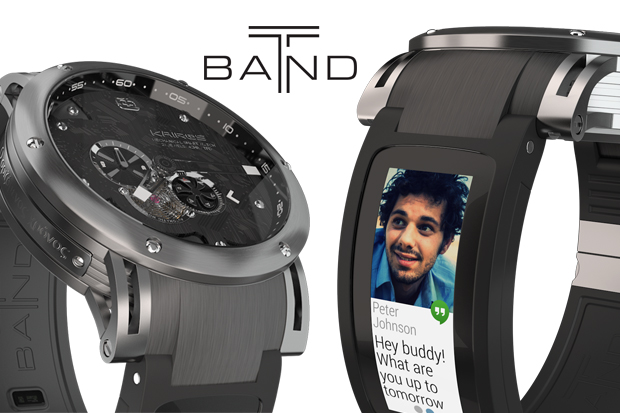
Another day, another wearable design. This time it’s something called the Kairos T-Band, a watch band that connects to your normal watch and enables all sorts of exciting things like step tracking and notifications. I’ve seen a few of these sorts of things over the past year – one company hid everything inside a nice leather band and didn’t include a screen – and this one has just enough going for it that it’s probably not a massive scam.
The basic band, called the ND, has no display and simply vibrates notifications and sends sensing data to your phone.
T-BAND ND (No Display) model is designed for people who want extended battery life, basic notifications (via vibrator and multi-color LED indicator), and activity (fitness/sleep), health data monitoring without the need for fancy displays or touch sensor capabilities. This is the ultimate businessmen’s smart watch, or rather a wearable device (smartband). Battery life is expected to last more than 7 days with the ND model.Features:
On board Kairos OS will be able to push notifications such as text messages, incoming calls, and also push alerts from available apps via a discreet multi-color LED indicator and/or vibrator motor. On top of having multiple sensors such as 9-axis gyroscope, accelerometer, compass and optical sensor, the ND model also gets GSR (Galvanic Skin Sensor) which detects skin temperature and sweat.
Other models will have touch sensitive displays. The $1,200 model includes a mechanical watch.
Everything pictured on the Indiegogo page is possible – curved displays, motor vibrations, and sensors included – but it’s up to the Kairos folks to put them all together. Whether or not they succeed is still in question but it’s a clever idea and a clever implementation. I expect to see more of these hitting the market this year so this won’t be the last smart band we see.
from TechCrunch http://feedproxy.google.com/~r/Techcrunch/~3/XDnRcmuxN1M/
via IFTTT
Ten One Design’s Mountie Clip Is Perfect For Duet’s iPad Display App

Your mobile two-screen setup just got a lot more perfect: Ten One Design has launched the Mountie, a two-sided clip that securely mounts an iPad, iPhone or any other mobile device to your MacBook or iMac’s bezel, while remaining small enough to slip into a jacket pocket or laptop case accessory compartment.
The Mountie isn’t the first gadget to do what it does, but it does appear to be among the best designed. Padded rubberized inserts mean that it’ll respect your device’s industrial design, and fit snugly regardless of what you’re trying to attach to what. A snap clamp squeezes your device to make sure it won’t fall off while you’re working, and a long vertical support strip means you won’t get the wiggle and waggle that can make using two loosely joined devices at the same time somewhat nausea inducing.

Two weeks ago, I would’ve walked right past the Mountie, despite it being named for the horse-riding national police force of my homeland. But now that Duet’s excellent secondary display app for iPad and iPhone exists, the Mountie becomes a gadget I will likely recommend (once I confirm it works as advertised, as it should, based on Ten One’s track record) for just about any Mac-happy mobile worker.
When traveling, my main productivity suck is not having multiple displays to work across, and Duet combined with the Mountie looks like a cure for all my ails. Ever since the days of the original USB-powered Mimo monitor, I’ve had a hankering for this kind of solution, but those that use USB drivers and Wi-Fi connectivity have ultimately proven unsatisfactory, or not actually portable. A 9.7-inch iPad Air, however, with a Mountie and a 15-inch Retina MacBook, may just be a new high water mark in portable productivity.
from TechCrunch http://feedproxy.google.com/~r/Techcrunch/~3/__fdsPsY1Bc/
via IFTTT
Social networks are simply not important in the workplace
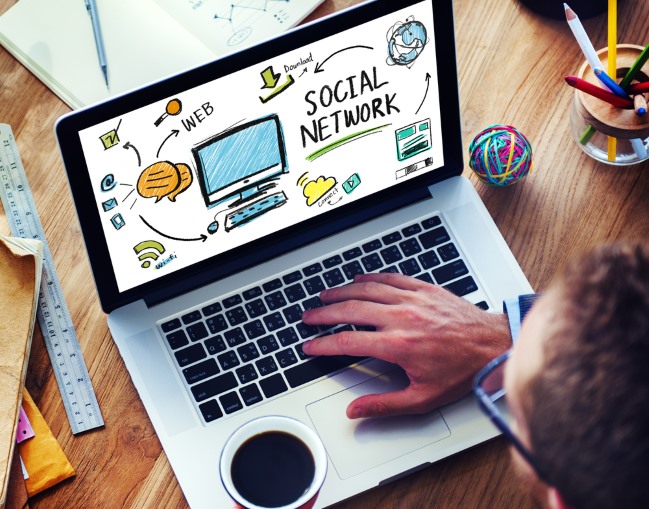
Surveys often reveal facts that are largely common sense, and this is certainly true of a study by the Pew Research Center -- the findings being that is seen as "very important" to workers. Nearly half of the 1,066 people surveyed said internet, email and cell phones made them more productive, while just 7 percent said the opposite was true.
So far, so predictable. But the same study also reveals that just 4 percent of workers feel that social networking sites like Twitter, LinkedIn and Facebook are "very important". These are findings that Facebook would almost certainly disagree with, as would Twitter and LinkedIn, despite reports suggesting that Facebook is valuable to business users.
In most areas of work, employers discourage use of, and even block access to, social networks. It is, of course, not just a case of social networks being seen as poor additions to a worker's arsenal, but also that they serve as a distraction. The same could be said of email -- where there is always time for the occasional personal email throughout the day -- but in terms of importance to getting a job done, social networks rank very poorly.
Part of the reason behind this could be that 46 percent of those questioned said that their employer blocked access to certain websites, or has rules about what employees could post online. While 23 percent of employers encourage workers to promote their company online, the lack of value placed on social media suggests that this promotion is either not being done, or it happens through other channels.
The way social networks are perceived may change if Facebook's plans to launch a business-centric version of the social platform comes to fruition.
Photo credit: Rawpixel / Shutterstock
from BetaNews http://feeds.betanews.com/~r/bn/~3/yrp7TQLR6Ow/
via IFTTT
Actually, Our Greatest Hopes Lie With Techies

For all the stories of 2014, few got the attention of the press like the tension between San Francisco residents and the rising tide of engineers and startup founders who started calling the city their home. Accused of driving up rents for apartments as well as blocking bus stops, these techies have been under constant criticism from locals who see these newcomers enjoying the city without truly engaging with its culture and society.
The roots of this conflict are deep. As our own Kim-Mai Cutler wrote in her epic report on the issue, the policy antecedents of the SF housing crisis are long, complex, interconnected, and largely impregnable to change. SF hardly reached this point in a day, and it will not solve it in a short period either. There is such a deficit of housing and office space in the city, that even with all the construction going on in South of Market and other neighborhoods of the city, it will barely make a dent in housing prices.
That’s why the average sale price for a home in the city passed the $1 million barrier for the first time this year. Compare that to the price of a decent single-engine plane like the Cessna 400, which is approximately $620,000, and you start to understand where some of the criticism against techies is coming from. Another few more startup IPOs, and residents might as well live in the skies on a new private jet just to find an affordable housing option.
It is easy to look back over the year’s events and assume that housing prices and ridiculous comparisons to luxury planes are the cause of the animosity toward our industry. But if we learned anything from the past year of blowback in San Francisco, it is that housing prices are just a small part of the problem with the technology industry and its interaction with society.
Indeed, in my very first article for TechCrunch almost a year ago, I discussed the sudden rise of hatred toward the Valley and its workers. My argument was simple: “Today’s companies are increasingly destroying the value of existing companies to create the next generation of products and services. We can argue whether the end result is a net benefit to society, but we cannot avoid the immediate impact our work has on the rest of the country anymore.”
Little did I know that 2014 would shape up to be a cataclysm between techies and almost everyone else living in this country.
As the technology industry quickly engulfs all other sectors of the economy and threatens the livelihoods of more workers, the cacophony of criticism has grown louder. As just one example, Kevin Roose attacked the rise of on-demand startups for their use of contract workers, noting that these workers receive none of the benefits of full-time employment, despite extensive regulations placed on their work by the companies.
Despite the importance of this dialog, there has been little real work done to openly engage on the problems that our startups are creating for society. The hubris of our industry has only grown with the valuations of companies like Uber and Airbnb, leading to a further distancing between the work we do and the effects we have on every person in the country, and really, the world.
What does it mean for American society if we bifurcate it into service-requesters and servants? This is a fundamental question, particularly given how much the technology we are building is shaping this outcome. Do we want this two-tier structure, or are there ways to build other technologies that can ameliorate and maybe even eliminate it?
It can be hard to experience the vitriol directed toward technology startups today yet continue to seek out root causes. But that is precisely what we must do. People aren’t angry at startups and technology, but those are among the most visible signs of the huge inequality that has grown in America over the past thirty years.
As we start into the new year and the second half of this decade, it is time to revisit these issues and reconnect with the optimistic spirit that made Silicon Valley what it is today. We don’t have to live with income inequality if we can design the right economic structures to slow its growth down and ultimately reverse it.
Just take education as an example. Outside the hype around education startups like MOOCs, there has been very little real progress on addressing the yawning gap in education outcomes in America, despite the importance of education in staying ahead of the continuous automation of jobs. The internet, despite all the regulations being placed on it, is still a wide canvas upon which to draw the future, and that is why techies are our greatest hope for a gentler, fairer society.
I am deeply optimistic about what we can accomplish. I strongly argued that algorithms have the ability to do more for worker rights than labor unions in the twenty-first century, simply because a single decision in the design of an algorithm can instantly improve the quality of life for thousands of people. That is precisely what is happening at Starbucks, which is adjusting its scheduling algorithms to go easier on parents through more consistent work shifts. The politics over these policies won’t disappear, but solving them will become simpler than before.
We are only halfway through this decade, and we have already seen some of the negatives that startups pose for workers. But with so much potential left with technology, there is no reason why the next five years have to be the same. There must be a better way, and it is my new year’s wish that we seek it out.
Featured Image: torbakhopper HE DEAD/Flickr UNDER A CC BY-ND 2.0 LICENSE
from TechCrunch http://feedproxy.google.com/~r/Techcrunch/~3/VgsE7g7RGwM/
via IFTTT
You Could Fill Up At The Pump With Apple Pay Starting Next Year

Apple is working to expand the reach of Apple Pay, and its next major destination might be the gas pumps. Chevron’s official Twitter account revealed yesterday (via Business Insider) that the gas company is working to make Apple Pay available at its fill-up stations in the U.S. Pump payments are a key ingredient to making Apple Pay truly a convenient, complete replacement for traditional payment cards.
The Chevron account originally tweeted that they hoped to offer Apple Pay at their pumps as soon as early 2015, but then changed their tune to state that there wasn’t actually any official timeline in place, but that they were indeed working with Apple to make it happen.
As the payment system already works with NFC terminals that have presence in some stores, and with a range of payment providers, Chevron and Texaco already do technically accept Apple Pay, but the at-pump payments would be a first that would make for much more convenient transactions overall. Card-based payment at the pump is a huge boon for drivers, and NFC terminals built in to the pumps would make it even easier to fuel up with Apple’s new online payment solution.
Already, Apple is expanding the reach of Apple Pay quickly, and it can lay claim to being among the most successful mobile payments initiatives in existence despite its relative youth, simply because few other offerings have really achieved much traction with the overall consumer population. Apple Pay accounted for 1 percent of digital transactions in November according to research firm ITG, which reveals it to be a strong competitor to PayPal, the only other player out there achieving much success.
Achieving critical mass for a system like Apple Pay now depends on winning retailers and various consumer-facing verticals over to Appel’s side – nothing short of omnipresent acceptance will let it do more than linger in the low single digits of digital transactions.
from TechCrunch http://feedproxy.google.com/~r/Techcrunch/~3/o1hCmRJCA10/
via IFTTT
Windows Phone is stuck in the low-end market
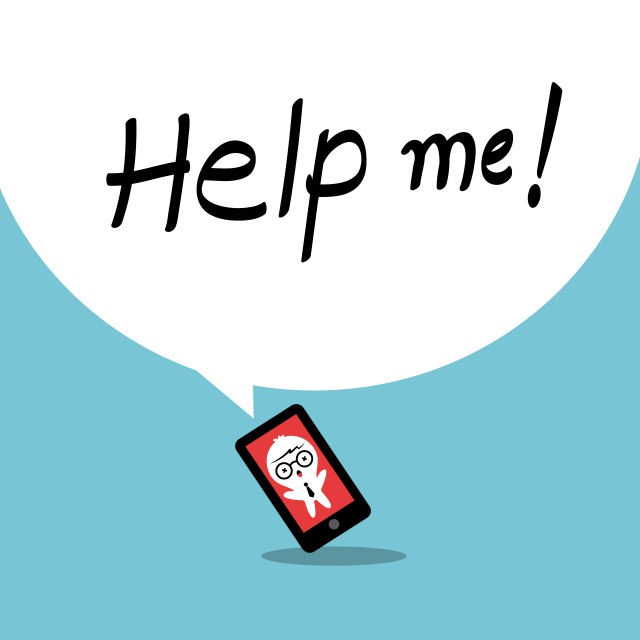
At the end of 2014, the Windows Phone landscape is dominated by low-end smartphones. Of the ten most popular devices that the platform has to offer, just two are high-end handsets -- however, neither is a current-day flagship. If it is not clear enough by now, Windows Phone is nothing more than a low-end affair, after more than four years down the road. Is that a bad thing?
Nokia Lumia 520 is the most-successful Windows Phone around, accounting for a whopping 25.4 percent of Windows Phones in use. Put differently, it is as popular as the following nine most popular Windows Phones put together. Altogether, the top ten makes up 67.2 percent share in this market, according to information revealed by AdDuplex.
In the top ten, only Lumia 920, Lumia 710, Lumia 720 and Lumia 925 did not launch as low-end devices. However, none of them has been released within the last year and a half. (In fact, Lumia 710 -- which runs Windows Phone 7 -- arrived more than three years ago.)
The most recent is Lumia 925, which Nokia introduced on the market in June 2013. Lumia 920 is more than two years old, having launched alongside Windows Phone 8 in late-2012. The leader of the pack, Lumia 520, was unveiled at MWC 2013 (held in February) -- it leads the pack in every market detailed by AdDuplex (in US, as Lumia 521).
When Microsoft revealed the Windows Phone Store Trends for December 2014, the company advised developers to target low-end smartphones, as low-memory devices (with 512 MB of RAM or less) are responsible for 71 percent of app downloads -- Lumia 520 alone accounts for more than 25 percent of all Windows Phone app downloads.
Needless to say, the ten most popular Windows Phones are Nokias, which account for a whopping 95.51 percent of Windows Phones used today. The next most popular vendor is HTC, followed by Samsung and Huawei. Other vendors are rising in popularity, but their share of the Windows Phone market is close to naught (0.21 percent, to be exact).
This explains the lack of interest a lot of vendors -- other than Nokia/Microsoft -- have in Windows Phone. When the market is singlehandedly dominated by a single brand, it is tough for newcomers to strive -- so most players naturally want to stay away from the platform. What company wants to fight for scraps, after all, especially in such as a small market, of around 10 million unit shipments per quarter?
Similarly, for platform vendors with low market share, competing against such a dominant leader -- which is now Microsoft, after it bought Nokia's Devices & Services phone-making business -- makes little sense, especially when they are better positioned on other platforms -- Samsung leads the pack on Android, and Huawei and HTC are also stronger there -- and not even Nokia has made any profit within the last year (possibly, even longer) of Lumia sales.
Now, let's take a look at the software side of things.
Undoubtedly helped by its availability through the Preview for Developers program, Windows Phone 8.1 has managed to rise to 57.9 percent share in the Windows Phone market, followed by Windows Phone 8 with 27.1 percent and Windows Phone 7 with 15 percent.
Windows Phone 8.1 should capture the 27.1 percent share currently held by Windows Phone 8 once all Windows Phone 8 devices are upgraded to the latest version of the tiled operating system. Once that happens, it will be easier for developers to develop apps for the platform.
However, it is surprising, to say the least, that there are still so many Windows Phones in the wild running Windows Phone 8, when virtually all smartphones running this version of the tiled OS should have the software update to Windows Phone 8.1 available by now.
Are Windows Phone 8 users not updating their smartphones on purpose, or is there something else going on? Either way, this is a problem that must be taken care of before Windows 10 comes along. (It can be more easily explained in US, however, as follows.)
In US, AdDuplex's data makes it clear that the lack of software updates to Windows Phone 8.1 is the reason why Windows Phone 8 still holds 47.5 percent share of the Windows Phone market, while Windows Phone 8.1 is only at 46.6 percent share. Devices like Lumia Icon and Lumia 928 are still awaiting the said software update, after all.
Photo Credit: kraphix/Shutterstock
from BetaNews http://feeds.betanews.com/~r/bn/~3/q0Lupu6kXfU/
via IFTTT
Watch The New Tesla Model S P85D Destroy The Old P85 In A Drag Race
The Tesla Model S P85D packs dual electric motors and all-wheel drive. It’s basically a Porsche-killer that can transport seven people. And it utterly destroys the previous king of Teslas, the P85.
In the video above produced by Drag Times the P85D proves its worth by destroying a P85. It’s not even a race. The publication also recently took a P85D to a dyno to measure its torque, finding it packed 864 ft-lbs of torque. That’s double what’s found in a 2015 V8 Ford Mustang. But thanks to some sticky tires, all-wheel drive system and plenty of electronic controls, the P85D can clearly take advantage of that immense power as the drag race video above shows.
If anything, the sheer performance of the Tesla P85D (and even the older P85) should comfort gear heads fearing the EV revolution. Electric drivetrains can produce immense performance and excitement.
from TechCrunch http://feedproxy.google.com/~r/Techcrunch/~3/lD42CnuKF9o/
via IFTTT
Could Android apps save Windows Phone?
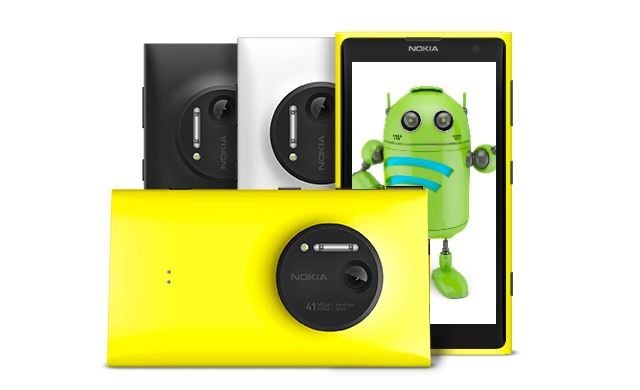
The mobile market is a four horse race... if we're being polite, that is. Really it's a battle between Apple's iOS and Google's Android. BlackBerry desperately neighs about its importance to the enterprise market, while Windows Phone stamps its hooves trying to gain attention as it's hauled off to the glue factory via the knacker's yard.
Microsoft's mobile OS may have gained ground in some parts of the world, but the reality is that it's struggling. Whenever we talk about Windows Phone it feels like the same topic comes up again and again, forcing us to re-tread old ground, bang the same drum. The app situation is dire; it's all but impossible to paint it any other way. But could opening up the ecosystem to Android apps save it from a slow and painful death?
While Windows Phone undoubtedly has its supporters, Microsoft has been flogging a dead horse for some time now. Having invested in the Lumia name, and currently working on bringing its desktop and mobile operating systems closer together, Microsoft clearly has no plans to pull the plug on Windows Phone any time soon. But something definitely needs to be done.
A recurring rumor that Microsoft might be considering adding Android app support to Windows Phone has resurfaced. This is something that may make many ears prick up with interest. The possibility that all of those apps that are currently missing from the Windows Phone Store could just be enough to make people give Windows Phone a second chance. So how likely is this? Could we see the like of Gmail on a Lumia handset (outside of a browser)?
Rumors like this are easy to dismiss as mindless ramblings or wishful thinking, but the rumor comes from a fairly reliable source -- Tom Warren from the Verge. Writing on Twitter he suggests that Android app support is indeed on the way to Windows Phone:
Interest was piqued among his followers. Questioned about his source, Warren -- usually very dependable when it comes to Microsoft news -- didn't give much away, but added: "I know they're still working on the technical implementation. They wouldn't be doing that for nothing".
Reference to Windows Phone while at the same time reviving the long-dead Windows Mobile moniker, oddly, raised fewer questions. A slip of the tongue or a reference to an as-yet unknown shift in direction for Microsoft's mobile vision? We already know that Satya Nadella's new view is focused on mobile first, cloud first, and that Windows 10 aims to blur the boundaries between mobile and desktop.
Microsoft is not going to throw away its efforts and just ditch Windows Phone, as much as many people think it should -- too much time and money has been invested in it. But there are clearly limits to how much effort can be put into convincing developers that the platform is viable and worth producing apps for. Adding support for Android -- just as BlackBerry did... although perhaps we shouldn't read too much into that! -- could be the Elastoplast Microsoft needs to keep the platform alive, bringing more of the apps people want to Lumia handsets to produce a larger user-base.
On one hand creating a user-base by providing access to Android apps will get Microsoft what it wants -- more users. But on the other, it may not be enough to encourage development specifically for Windows Phone (or Windows Mobile for that matter). Which is more important -- users using the apps they want, or native apps? Where there is already an app crossover, it is often the case that the Android version of an app is better, has more features, looks nicer. Would developers be even less likely to bother producing apps specifically for Windows Phone? Would it mater at the end of the day?
Are collaborations like this a good idea? Windows Phone has been on life support for some time now. Microsoft is unlikely to pull the plug and let its baby die, but it's clear that something needs to be done to prop it up until the operating system has a better sense of direction. Maybe then it will be a serious contender in the race.
Photo credit: Kirill__M / Shutterstock
from BetaNews http://feeds.betanews.com/~r/bn/~3/CXOLl5DY6Rw/
via IFTTT
Next Lock Screen: Microsoft's take on the Android lock screen
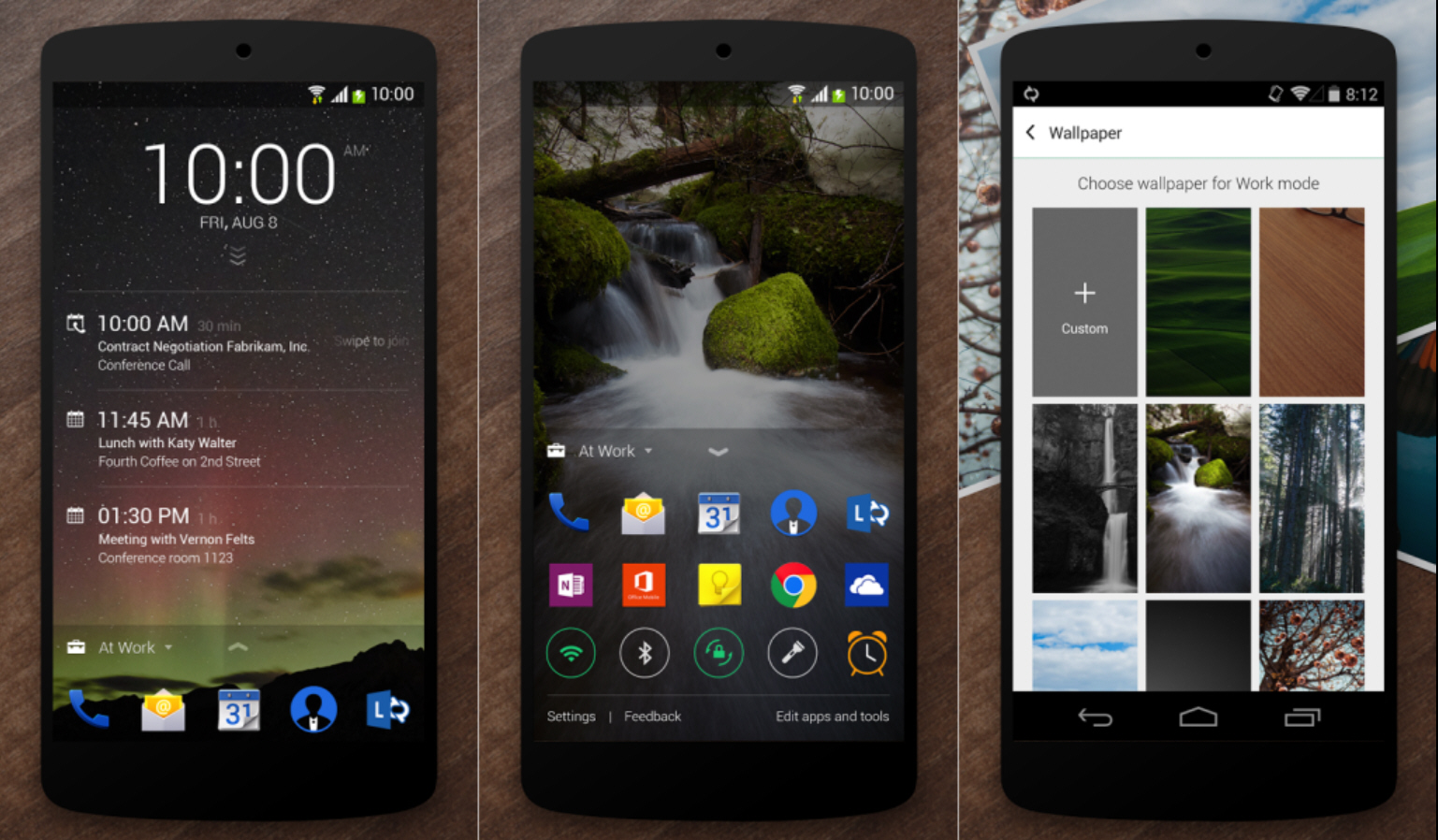
Next Lock Screen is an Android lock screen "built for busy professionals".
That sounds very familiar, but what’s a little more unusual is that Next is from Microsoft Garage, an "idea factory" where employees work on whatever "wild ideas" they like.
Lock screens aren’t exactly revolutionary, of course, and Next opens much like any other. Once running you’re able to see and scroll through your calendar, as well as viewing missed calls and text messages, Facebook Messenger/ WhatsApp/ WeChat notifications, and even the weather, without unlocking your phone.
In theory you can also just swipe to join a conference call, with the app automatically locating and entering your pin number/ meeting ID. But this only works if Next detects the invites, they contain a phone number and the pin number/ ID, and they’re from a supported service (GoToMeeting or Lync), so don’t expect too much: just try it and see.
Next’s Lock Screen has a Launcher area which you can populate with your preferred apps. These are presented in three location-based contexts: "At Home", "On the Go", "At Work". Once you’ve told Next you’re at home or work it remembers those locations and only displays related apps, a neat time-saving touch.
There’s also an option to customize Next Lock Screen with your own custom image. You’re able to have one picture displayed all the time (from local photos, images, or various cloud storage providers), or Next can display a separate image for its "At Home", "On the Go", or "At Work" modes.
This kind of app isn’t for everyone. Being able to launch apps and unlock your phone with a simple tap means it’s easy for this to happen by accident, for instance. And as there’s no extra security layer, no pin code or anything similar, a snooper could be browsing your phone without any hassle at all.
Next Lock Screen’s good looks and solid core functionality have earned it a 3.9 star rating at Google Play, though, and if you’ll use its location-based modes then it’s deserves a closer look.
from BetaNews http://feeds.betanews.com/~r/bn/~3/gFIEx4Q6vBM/
via IFTTT
Apple Details A Modular Stylus That Can Capture Handwriting On Any Surface

Apple has a new patent granted by the USPTO today (via AppleInsider) that describes a new type of stylus in detail, which can capture handwriting from a user, on a variety of surfaces and with a range of writing nibs that let it also write on paper, whiteboards or even an iPad’s capacitive touchscreen.
The stylus design uses accelerometers and other motion sensors to track movement, and activates when it detects its been picked up, pressed to paper or taken out of a slot or holster for better power efficiency. It transmits data either in real-time, or in chunks at timed intervals to preserve battery life (sort of like how some fitness trackers ‘call home’ and sync occasionally with your smartphone so as not to incur the huge power draw of constant wireless connection).
In the patent, it’s described as being able to capture handwriting accurately whether the pen is used on a surface like a table, or against a wall, or even simply in air, thanks to the onboard 3D motion sensors. It can work to reflect writing in real-time on separate displays, allowing it to be used for live rough work in a classroom setting, for instance, or as a central pool of real-time meeting notes for a small group.
The patent includes details of how the stylus could be used with different nibs or pen heads to write on different materials, so that it can be used with ink in notebooks, or with graphite for pencil drawings, or with markers for whiteboards. A capacitive nib would allow it to also work as a traditional stylus for use with devices like the iPad and the iPhone.
Apple’s stylus patent is not new – it was first filed in January, 2010. The tech in the patent might provide a bit of a challenge to execute well, given that Livescribe, a company that specializes in creating exactly this type of thing, still requires additional hardware like specialized notebooks to work effectively. Still, it’s a worthwhile reminder that Apple has invested resources in this direction, especially given that we’ve heard rumors of an upcoming 12-inch version of the iPad, which is something a stylus would complement nicely.
from TechCrunch http://feedproxy.google.com/~r/Techcrunch/~3/5c5v8MRRDcg/
via IFTTT
Flurry Finds That Apple Devices And Phablets Scored Big On Christmas

Flurry has released its annual Christmas report. Each year, the holiday sees the highest number of device activations and app installations as people open presents, and last week was no exception. What is interesting is that 51.3 percent of new devices activated were made by Apple, compared to 17.7 percent for Samsung, and 5.8 percent for Nokia.
Other smartphone makers, including Xiaomi, Huawei, and HTC, each held a less than one percent share on Christmas Day, despite holding large slices of the worldwide smartphone market. As Flurry notes, that is because their key markets are in Asia, where the holiday is not a gift-giving bonanza.
Apple’s success was driven by the iPhone 6, the number one device activated, and iPhone 6 Plus. Flurry, which compiled the report using data from the 600,000 apps it tracks, the iPhone 6 Plus was one of the top five devices activated this Christmas. In general, phablets became increasingly popular among consumers. In the week before Christmas, 13 percent of new device activations were phablets, a significant increase from 4 percent in 2013.
Flurry says that the availability of an iOS model is helping to drive phablet sales. Larger smartphones, however, have become increasingly popular over the past year. Back in January, Juniper Research estimated that phablets were expected to hit 120 million units shipped by 2018, up from the estimated 20 million phablets shipped in 2013.
Many analysts expected that growing sales of phablets would eat into tablet sales as users start depending on one mobile device instead of juggling two, and Flurry’s holiday research underscores that. Sales of tablets, as well as smaller smartphones, decreased as phablets became more popular, which means developer used to designing for palm-sized screens may have to start rethinking their work.
“App developers should take into account the fact that larger screens are becoming the primary device; it’s not just the secondary primetime tablet anymore,” Flurry noted.
Owners of new mobile devices were eager to start downloading apps. As usual, Christmas was a big day for app installs, with Flurry tracking 2.5 times the number of downloads, compared to an average day in the earlier part of December. Despite the bump, Christmas Day app installs have gradually decreased over the past few years because more people own smartphones and tablets now, so the novelty of playing with apps is beginning to wear off.
Still, this year’s spike was “a remarkable number considering the maturity of the U.S. market and the difficulty of getting recognized in app stores,” Flurry said. As usual, games and messaging apps were the most popular downloads on Christmas Day.
from TechCrunch http://feedproxy.google.com/~r/Techcrunch/~3/sZUsAvZIej4/
via IFTTT
Microsoft's Surface Pro 3 accolades are a bit rubbish

Considering the very rocky start Microsoft’s slate got off to after it launched in 2012 (middling reviews, a $900 million charge relating to Surface RT inventory adjustments when no one bought it, etc.), you can’t blame Microsoft for being a bit boastful now that it’s finally getting things right with Surface Pro 3.
So when Microsoft releases a video called 'Accolades -- Surface Pro 3' you’d expect it to be filled with, well, accolades for the Surface Pro 3. But instead of a video offering up quality trumpet blowing, we get the equivalent of someone tooting on a kazoo.
The video essentially shows the Surface Pro 3 from the front, then we get a glimpse of the kickstand in use, followed by someone drawing a circle with the pen, and after a little spin around the device, the video finishes with the user detaching the tablet from the type cover. Finally we get the tagline -- "The tablet that can replace your laptop" (not, interestingly, just a MacBook).
In-between all that we get quotes flashing up on screen. The 'accolades'. These consist of "…the most beautiful thing Microsoft has ever produced" (The Verge), which is a bit of an odd choice ("Microsoft has made something stylish for a change" is hardly the greatest selling point ever). This is followed by "Gadget of the year 2014" and "Computer of the year 2014" (both from Stuff) and "One of the best inventions of 2014" (Time).
It’s all a bit meh. The Stuff awards are fine, but using both and presenting them separately, is pretty rubbish.
Surface Pro 3 is a good product, and it deserves the many accolades it has received. But the selection pulled here seem like the work of an intern in a rush to get home for the holidays.
It bugged me, as you can tell (I'm easily bugged), so I've picked some genuine accolades that Microsoft could use next time.
"A super-lightweight cutting-edge mobile device" (ZDNet)
"A futuristic machine, a marvel of engineering" (The Verge)
"The Surface Pro 3 is an awesome device" (Forbes)
"Surface Pro 3 puts Microsoft ahead of the competition" (BetaNews).
No need to thank me Microsoft. I'd bill you for my time but it took less than a minute.
Photo Credit: Suzanne Tucker/Shutterstock
from BetaNews http://feeds.betanews.com/~r/bn/~3/wJ2qe0zZwDM/
via IFTTT
My favorite tech products of 2014 [Wayne]
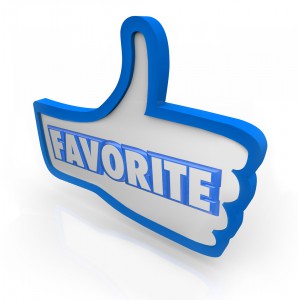
My colleague Alan Buckingham has already listed his favorite tech of the past year, and now it’s my turn. I’ve taken all sorts of new products for a spin over the past 12 months, so narrowing the selection down is actually pretty tricky. Apple disappointed me a little this year -- as the owner of an iPhone 5s I needed a big reason to upgrade to the iPhone 6, and a larger screen and Apple Pay wasn’t it. The iPhone 6 is an excellent phone, but I think I’ll hang on to the 5s for another year. Similarly, the iPad Air 2 just wasn’t different enough for me to consider that either. Thinner is a feature, not a benefit for me.
But fortunately, there was plenty of other new tech around that I did love, and here’s my top selection, in no particular order.
I finally got Google’s streaming device, and I’m a big fan. It’s great that you can cast YouTube and Chrome tabs to the big screen, but it’s the fact that you can do much more with it that really makes the dongle so worth owning. I use it to stream my own videos, and lots of other content including photos.
If you’ve just got one for Christmas, check out my guide here.
Samsung U28D590D UHD 4K 28-inch monitor
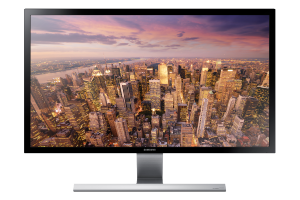 I’m a lover of multi-monitor setups, and the U28D590D is the centerpiece of a three screen strip that utterly dominates my desk. But Samsung’s UHD 4K monitor on its own is a fantastic piece of kit. It offers a native resolution of 3840×2160 pixels and has a very clean design. On the rear are two HDMI 1.4 sockets and a Display Port 1.2 input, and you really need to be using the latter to get the most from it. HDMI gives you 30fps, but Display Ports doubles that. I wasn’t sold on the idea of 4K to be honest, but the U28D590D has definitely changed my mind.
I’m a lover of multi-monitor setups, and the U28D590D is the centerpiece of a three screen strip that utterly dominates my desk. But Samsung’s UHD 4K monitor on its own is a fantastic piece of kit. It offers a native resolution of 3840×2160 pixels and has a very clean design. On the rear are two HDMI 1.4 sockets and a Display Port 1.2 input, and you really need to be using the latter to get the most from it. HDMI gives you 30fps, but Display Ports doubles that. I wasn’t sold on the idea of 4K to be honest, but the U28D590D has definitely changed my mind.
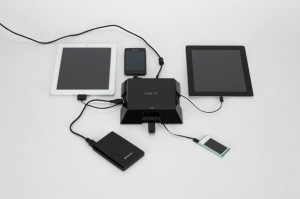 I know I’ve banged on about this quite a lot over the past few months, but the Hub It sync and charging station is a great piece of kit. It sits on my desk and lets me charge everything I could possibly want to without giving it a second thought. Its modular nature -- you choose which connectors (in addition to USB) it offers -- means it’s highly customizable. If you have lots of gadgets that require different changing methods -- mini USB, micro USB, Lightning, Qi wireless charging -- it’s superb.
I know I’ve banged on about this quite a lot over the past few months, but the Hub It sync and charging station is a great piece of kit. It sits on my desk and lets me charge everything I could possibly want to without giving it a second thought. Its modular nature -- you choose which connectors (in addition to USB) it offers -- means it’s highly customizable. If you have lots of gadgets that require different changing methods -- mini USB, micro USB, Lightning, Qi wireless charging -- it’s superb.
Gigaset QV830 8-inch Android tablet
Budget tablets have never appealed to me, purely because if you’ve got a decent tablet, the failings of the cheaper model will be amplified in comparison. But Gigaset’s 8-inch tablet is a decent offering, at a very affordable price (£69.99), and I find it useful as a backup device.
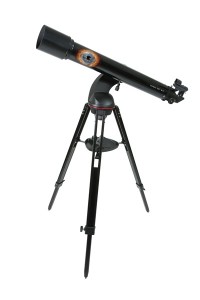 Celestron Cosmos 90GT Wi-Fi refractor telescope
Celestron Cosmos 90GT Wi-Fi refractor telescope
I’ve always been fascinated with astronomy, but never owned a decent telescope -- until now. The Cosmos 90GT is a great beginners scope that ties in with the Cosmos TV show, but comes from a respected telescope manufacturer. If you’re a lazy would-be astronomer who wants to see the stars without having to spend hours hunting for them, then this is ideal. You hook it up to your tablet, configure it, then use the app to control everything. Locate a celestial body on the app, and tap it to send the telescope there.
The product comes with its own Wi-Fi, so you can connect to it, and control it, from anywhere.
Others
Google Cardboard is a fun project that lets you turn your smartphone into a cheap virtual reality setup that can give you motion sickness and headaches, but which does just enough to get you excited about owning an Oculus Rift. I don’t use my cardboard creation very often, but I do enjoy dipping into the virtual worlds it makes possible.
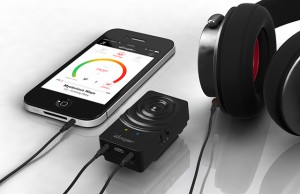 Woojer , a wearable subwoofer that lets you feel sound, is similarly something I don’t use much, but which I do get more use from than I perhaps would have expected to.
Woojer , a wearable subwoofer that lets you feel sound, is similarly something I don’t use much, but which I do get more use from than I perhaps would have expected to.
Finally, Jawbone UP24 deserves a mention. I’ve only had the wearable since Christmas (it was a present) but as someone who likes to track their activity, I’m really appreciating it so far. The sleep tracking is a little iffy -- I spent over an hour being unable to get back to sleep last night, and my lack of movement had the device declaring I was experiencing deep sleep at that point, although of course there’s no way for it to be able to tell the difference. Shortcomings aside, it’s a good little tracker.
What new tech (hardware or software) have you acquired that you love this year?
Photo Credit: iQoncept /Shutterstock
from BetaNews http://feeds.betanews.com/~r/bn/~3/V8LKE_rgcq8/
via IFTTT
Samsung unveils a better Galaxy Note 4 -- faster download speeds in tow
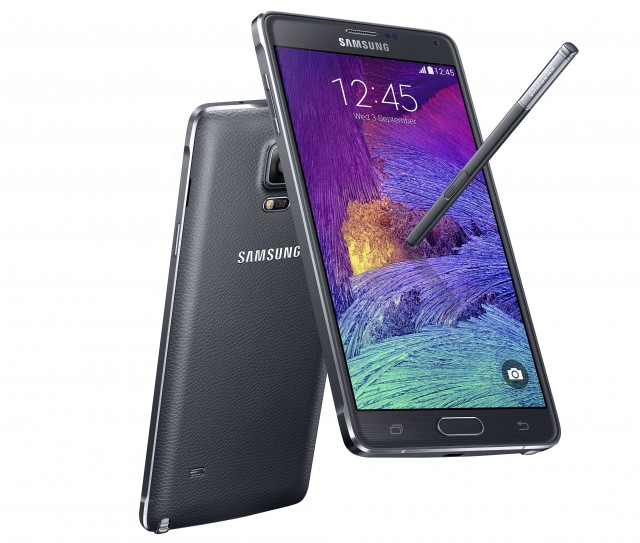
Samsung has unveiled a new version of its Galaxy Note 4, featuring support for LTE Advanced Tri-Band Carrier Aggregation and Category 9 cellular networks. Dubbed Galaxy Note 4 LTE-A, it promises much faster download speeds over 4G LTE compared to the regular models, which the South Korean maker announced in early-September.
Galaxy Note 4 LTE-A is capable of offering download speeds of up to 450 Mbps. To put things into perspective, that is 50 percent faster than the Qualcomm Snapdragon 805-equipped Galaxy Note 4 -- which is no slouch to begin with -- and a whopping 200 percent faster than the Exynos-powered model.
However, Galaxy Note 4 LTE-A will only be able to reach those kind of download speeds later in 2015, when 4G LTE Category 9 cellular networks are expected to be commercially available. That being said, the phablet does have another trick up its sleeve, which it will be able to use much sooner.
Because it features LTE-A Tri-Band Carrier Aggregation, Galaxy Note 4 LTE-A can connect to three cellular network bands at the same time, and, as the name of the technology implies, aggregate them into one, juiced-up connection.
Compared to the Snapdragon 805-powered Galaxy Note 4 -- which can only connect to up to two bands simultaneously -- the new model is better equipped to maximize the transfer speeds offered by today's fastest 4G LTE cellular networks, which enable download speeds of up to 300 Mbps.
One thing that Samsung is not clear on is which processor powers the new Galaxy Note 4 LTE-A. Is it still Snapdragon 805, or has Qualcomm supplied its newer Snapdragon 810? Given Samsung's track record, I'm inclined to believe it is the latter.
There is no official word yet regarding where Galaxy Note 4 LTE-A will be available, and how much it will cost when it goes on sale.
from BetaNews http://feeds.betanews.com/~r/bn/~3/QWg91x_7HEM/
via IFTTT
Book wakeup calls from strangers with Wakie
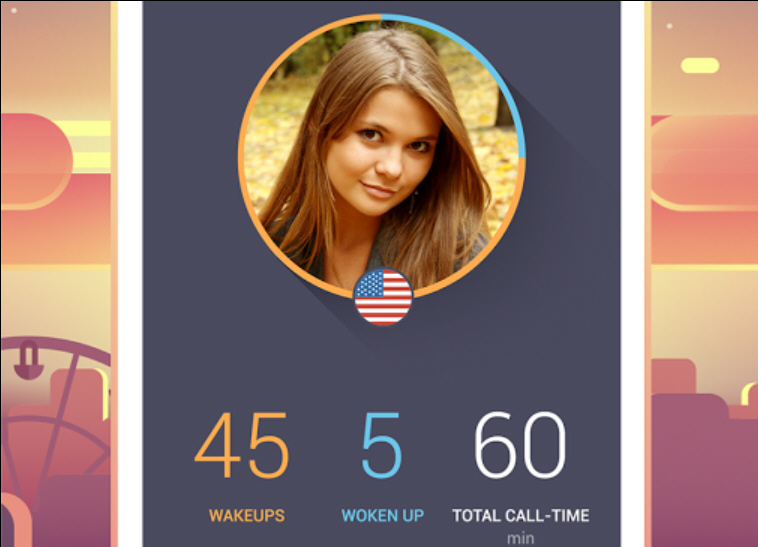
There are a vast number of alarm clock apps available for every platform, most of which are tired variations on the same thing: choose a skin, set a wakeup sound/ method, and that’s about it.
Wakie is an iOS and Android alarm clock app with a difference. Forget custom audio files or complicated snooze functions, instead you’re called by another Wakie user, who chats, sings songs, ask you questions, or otherwise gets your day off to a much more interesting start.
If this idea makes you a little uncomfortable, then you’re not alone, but the app does include some important safeguards.
The calls are routed through Wakie, so the caller never gets to see your phone number or find out who you are.
Calls are automatically cut off after 60 seconds, too. There’s no time for your chat to get awkward, and even if it did, you can just hang up.
The developer also says the app "learns" who you like to connect with, so presumably will try to match you with your preferred gender/ age range, most of the time.
Alternatively, if you don’t need to receive a call, you can volunteer to make one yourself. Just click “Wake Someone Up” and you’ll be sent push notifications whenever someone needs a call. (You’ll need an internet connection to wake someone up, although not to be woken, as you’ll receive a regular phone call.)
There are some restrictions and issues. In particular, Wakie only works in a few countries at the moment: the USA, Canada, the UK, Ireland, Hong Kong and Singapore. More English language countries are due to be added soon, with further expansion to follow.
As the system relies on other people calling you, your alarm time won’t be as precise as with automated apps. The official FAQ says they could be out by plus or minus five minutes.
But the good news is that, if there’s no-one around to make your call, Wakie does have an automated system which steps in, makes the connection and plays you a pre-recorded message.
There’s no telling quite what sort of call you’re going to get with Wakie, and that’s probably the point. If you want complete safety then stick to your phone’s built-in alarm app; but if you’re happy to gamble with a random caller -- who, even if they turn out to be an idiot, will still at least wake you up -- then this is certainly a more interesting and personal way to start your day.
from BetaNews http://feeds.betanews.com/~r/bn/~3/GIuTwcGGvtI/
via IFTTT
Xiaomi Confirms It Raised $1.1B At $45B Valuation

Xiaomi, the fast-growing Chinese hardware company best known for its low-cost smartphones, confirmed today that has raised $1.1 billion in new funding at a valuation of $45 billion. In a Facebook post, Xiaomi co-founder and president Bin Lin said the round was raised from investors including All-Stars Investment, DST, GIC, Hopu Fund, and Yunfeng Capital.
“This is an affirmation of Xiaomi’s stellar results in the four years, and heralds in a new phase for the company,” said Lin, adding that Xiaomi will unveil a new flagship device next month (reportedly a new smartphone that will make its first appearance at CES).
Xiaomi’s latest round was first reported by the Wall Street Journal last week. Its present valuation of $45 million is a significant increase over its previous valuation of $10 billion in August 2013, which Xiaomi director Hans Tung confirmed after its last funding announcement.
The company will likely use the capital to increase sales of its smartphones in its key growth markets of India, Southeast Asia, Brazil, and Mexico. In 2013, Xiaomi said it sold about 19 million phones, a number it hopes will more than double to 40 million units by the end of this year. In October, the company became the world’s third-largest smartphone vendor by shipment volume, according to both Strategy Analytics and IDC.
Featured Image: Xiaomi
from TechCrunch http://feedproxy.google.com/~r/Techcrunch/~3/Pt9bF5i90Sg/
via IFTTT
Gmail Now Even More Inaccessible In China

China has made it increasingly difficult to use Google services, including Gmail, this year. Now Gmail users are blocked from a workaround that allowed them to access their emails through third-party services.
Previously, people could still download messages through apps like Apple Mail and Microsoft Outlook, which use POP, SMAP, and IMAP. Now it appears that these servers have also have been blocked by China’s Great Firewall. This means users in China will only be able to access Gmail through a VPN service.
Google’s own Transparency Report shows a dramatic drop-off in traffic to Gmail from China that started on Friday. A Google spokesperson for Asia said “we’ve checked and there’s nothing wrong on our end.”

While Google has been subject to censorship since launching Google.cn in 2006, China has recently imposed even stricter limitations on its services. In June, before the 25th anniversary of the Tiananmen Square massacre, China blocked several Google sites, including Google+, Gchat, Gmail, Google Calendar, and Google Drive.
Featured Image: Shutterstock
from TechCrunch http://feedproxy.google.com/~r/Techcrunch/~3/5zyQ3Y6QmD4/
via IFTTT
Pinterest Will Open Promoted Pins To All Advertisers Following Success Of Beta Program

After years of questions about how it will make revenue, Pinterest roadmap to monetization is becoming more clear. The company announced today that its Promoted Pins, which it made available in beta to certain brands eight months ago, have performed “just as good and sometimes better than organic Pins” and it will make the program available to all advertisers on January 1.
Pinterest claims that brands who participated in the Promoted Pins beta program saw a 30 percent increase in “earned media”—or the amount of people who save a Promoted Pin to one of the boards. Promoted Pins are repinned an average of 11 times, the same as a normal pin made by one of the site’s users. Furthermore, Promoted Pins continued to get more pins in the month after a campaign, or a 5 percent increase in earned media.
Once the Promoted Pins program rolls out, Pinterest says advertisers will have access to more ad formats and advanced targeting. In addition, it’s also launched the Pinstitute, a twee name for a program that will show advertisers how to leverage Promoted Pins through workshops and webinars.
The Pinstitute follows the launch of Pinterest’s analytic dashboard in August, which lets advertisers track how their pins performed and how much content is being pinned from their sites through Pinterest’s Pin It buttons.
Pinterest has been focused on monetizing its site since raising an impressive $225 million Series E in October 2013, which valued the company at $3.8 billion. At that time, Pinterest said one of the key uses of the capital would be to continue development of monetization, which it first began testing around the same time it closed its Series E, into a global program.
from TechCrunch http://feedproxy.google.com/~r/Techcrunch/~3/oSmgGTzYQtQ/
via IFTTT
‘The Interview’ Nets $15 Million In Online Sales During Opening Four Days

Sony has revealed that The Interview has earned $15 million in consumer spending via rentals and purchases across online platforms in its first four days of online availability. A source with knowledge of the matter confirms that the overwhelming majority of these sales occurred through Google Play and YouTube Movies, meaning Google’s ability to rally and offer up its media stores as sales platforms helped considerably with Sony’s ability to get eyeballs on the gross-out buddy comedy that sparked international incidents and terrorism fears.
The Interview’s opening performance online has already helped it become the number one online film of all time for Sony Pictures Entertainment. Sony released the film beginning at 1 PM ET on Christmas Eve day, via Google Play, YouTube Movies, Microsoft’s Xbox Movies and SeeTheInterview.com. It has been streamed more than 2 million times already since being made available, according to Sony.
While The Interview was cited as the reason behind the massive hack that sent Sony Pictures essentially back to the stone age, thus far it doesn’t appear that there has been any retaliation from the original hacker group for its eventual release. Sony’s PlayStation Network, and Xbox Live, were both taken down over the past few days beginning on Christmas, but that seems an unrelated move, instead performed by hacker group Lizard Squad mainly “for the lulz,” per the group’s official social media presence.
from TechCrunch http://feedproxy.google.com/~r/Techcrunch/~3/K_VjRP-pu-A/
via IFTTT
Access to Gmail is blocked in China
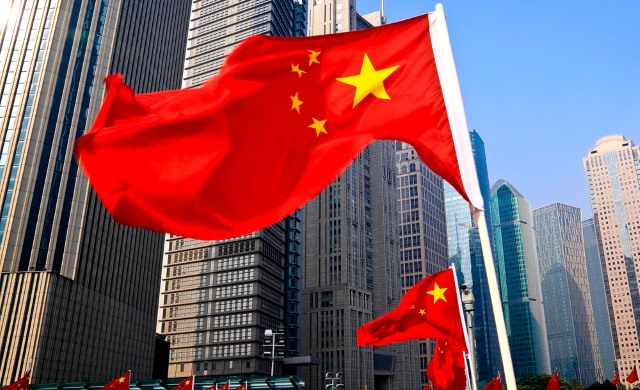
China is one of the more 'interesting' counties when it comes to its attitude to allowing unfettered access to the internet. The Great Firewall of China is famed for the restrictions it places on the online activities of Chinese citizens. New data seems to suggest that Google's Gmail is currently blocked in the country.
Dyn Research, a web traffic research company, reports that Gmail traffic is being blocked at the IP level rendering Google's email service inaccessible within most of China. The disruption appears to have started late on Christmas day and is still on-going.
You can see the drop in traffic for yourself thanks to Google's Transparency Report. The interactive graph shows that there was a sharp drop in Gmail traffic as Christmas day drew to a close. There is a bit of fluctuation for a while, but then there is a prolonged period of flat-lining. There's no sign of things improving.
Speaking to Mashable, Dyn Research's vice-president of data analytics Earl Zmijewski said that "China has a number of ways they can block content. One of the crudest ways is to just block an IP address, and when you do that, you block all the content available at the IP".
A tweet from the company confirmed its findings of an IP level block on Gmail when the site is served from Hong Kong:
Hong Kong is significant as Zmijewski explains that a lot of Chinese Gmail traffic is routed through IP addresses in the region.
China has a history of censoring and blocking web access. News agencies and other online services find that they have a constant game of cat and mouse if they are to evade the firewall or censors. Google has not yet indicted whether it will take any steps to get Gmail up and running in China.
Photo credit: ArtisticPhoto / Shutterstock
from BetaNews http://feeds.betanews.com/~r/bn/~3/UMGZaHHVkoU/
via IFTTT






